BBG Watch Commentary
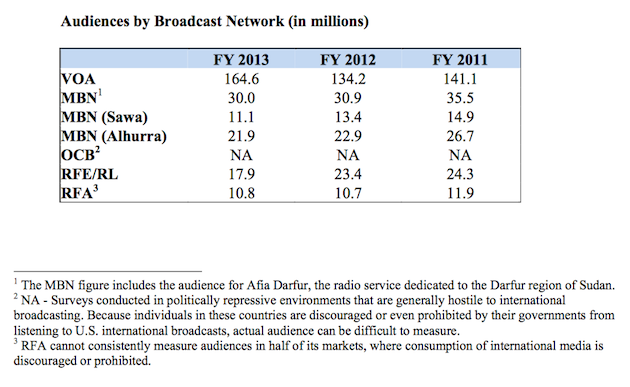
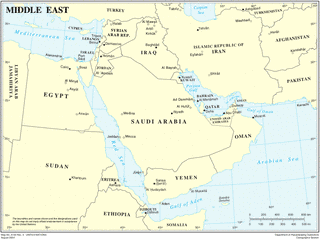 According to new audience research data released by the Broadcasting Board of Governors (BBG), some of the most critical U.S. international media outlets funded by American taxpayers to provide news overseas have lost audiences in key world regions such as the Middle East between 2011 and 2013.
According to new audience research data released by the Broadcasting Board of Governors (BBG), some of the most critical U.S. international media outlets funded by American taxpayers to provide news overseas have lost audiences in key world regions such as the Middle East between 2011 and 2013.
The International Broadcasting Bureau (IBB) executives who presented these findings on behalf of BBG have tried to hide these audience losses in a press release claim of an overall audience increase in 2013, which in fact occurred but due largely to alleged audience growth for the Voice of America (VOA) in Latin America, a region strategically less important for the United States than the Middle East. Latin American countries, such as Mexico where VOA places its programs, have mostly free media, while countries where BBG lost audiences mostly do not.
Largely because of a single and questionable audience gain in Latin America, which even IBB executives admit may be due to counting previously existing consumers of program placement on local stations, they could claim a global audience of 206 million in 2013. Without this apparently newly-discovered Latin American audience, much of which may have existed before and had not been counted in previous years, the BBG’s global audience in 2013 would not be much larger than in was in 2008, when it stood at 175 million.
The current IBB management team was formed and became entrenched at about that time.
Without the questionable gain in 2013 in Latin America, VOA’s global audience would also not have significantly increased this year. In 2012, VOA had about the same global audience as it had in 1989 despite a large world population growth and the employment by VOA in the last 24 years of new media delivery platforms, such as TV, Internet, social media and mobile phones.
In fact, key media outlets supervised by the BBG and serving key world regions have lost audiences in recent years under the overall management of BBG boards but especially their International Broadcasting Bureau executives who are responsible for strategic planning, program placement and budgeting.
Rather than keep up with and possibly exceed world population growth of nearly 6 percent between 2008 and 2013, key BBG media outlets, especially those serving the Middle East, have all registered a decline in their audiences between 2011 and 2013. There is also no mention of any audience gains in such strategically important countries as China and Russia.
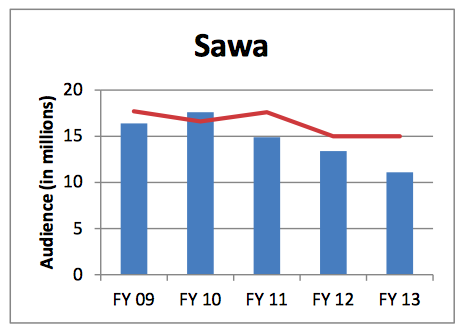
The Middle East Broadcasting Network’s (MBN) Radio Sawa has lost 3.8 million regular listeners and other media users between 2011 and 2013 (14.9 million in 2011; 11.9 million in 2013).

The Middle East Broadcasting Network’s (MBN) Alhurra television has lost 4.8 million regular viewers and other media users between 2011 and 2013 (26.7 million in 2011; 21.9 million in 2013).
The Middle East Broadcasting Network’s (MBN) audience estimate which includes Afia Darfur, the radio service dedicated to the Darfur region of Sudan, has lost 5.5 million radio listeners and other media users between 2011 and 2013 (35.5 million in 2011; 30.0 million in 2013).
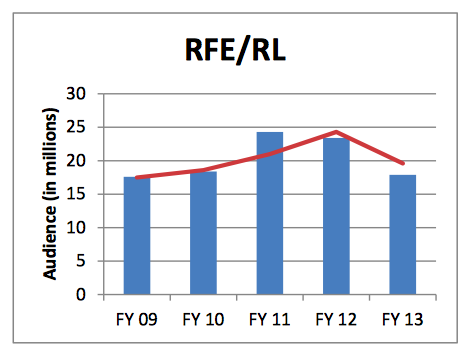
Radio Free Europe / Radio Liberty (RFE/RL) has lost 6.4 million radio listeners and other media users, mostly in Russia and Central Asia between 2011 and 2013 (24.3 million in 2011; 17.9 million in 2013).
RFE/RL experienced a major management crisis in 2012. Since then a new management led by Kevin Klose has been installed.
Audience losses, however, cannot be attributed only to managers of individual media outlets within the BBG. In recent years, these media entities have come under increasing pressure from IBB executives and strategic planners and have lost much of their previous programming and managerial independence. Critics blame mostly these IBB managers for a faulty strategic plan and audience losses in key markets.
These audience losses have occurred even though BBG’s budget, which is designed and controlled by IBB with the approval of BBG boards, increased from $668 million in 2008 to $767 million in 2012. IBB has negotiated a $50 million five-year contract with Gallup to measure audiences abroad.
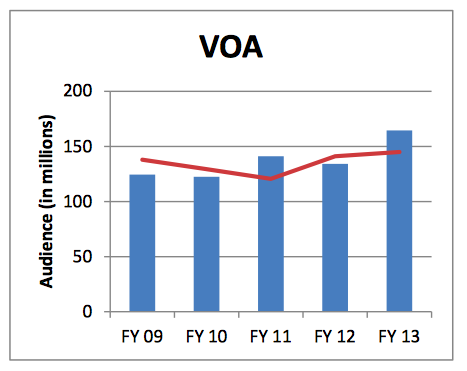
The Voice of America, for which Gallup may have found an already existing audience in Latin America, is believed to be by critics the worst managed media outlet within the BBG. Its central news operation is nearly defunct and its workforce demoralized.
In addition, audience numbers are not everything. Some of the placement advocated by IBB executives and strategic planners generates higher audience numbers because its focus is on fluff journalism rather than serious political news that is the BBG’s core mission.
For example, the Voice of America English website posted five reports on a recent royal christening in Great Britain, but failed to report in a timely and accurate manner on recent historic events in Ukraine, failing to report at all on Vice President Biden’s call to Ukraine’s President Yanukovych and giving late and wrong information about a bipartisan visit to Kyiv by Senator John McCain and Senator Chris Murphy. Such news reporting failures have become a daily occurrence on the VOA English news website and are often repeated by VOA’s 40-plus foreign language services.
VOA’s Ukrainian Service has, however, done an outstanding job in reporting on events in Ukraine and U.S. reactions to these events, as did RFE/RL languages services. The problem with the organization, which former U.S. Secretary of State Hillary Clinton called “defunct” in its ability to carry out its core mission, are not individual media outlets, language services or journalists. The problem rests with senior executives of the International Bureau, some of the entity heads and their deputies, a few other senior managers and those former BBG members who refused to replace them.
The BBG board does have new energetic chairman, Jeff Shell, and new members who may be serious about management reform. The audience survey press release may be a desperate attempt on the part of IBB executives to get BBG members to join them in deceptive PR. But even if for practical PR reasons they were able to do this, the hope among rank and file journalists and other employees is that the days of these IBB and VOA executives are numbered.
Radio Free Asia (RFA) shows only a very small audience loss which is statistically insignificant. RFA cannot consistently measure audiences in half of its markets, where consumption of international media is discouraged or prohibited.
The Office of Cuba Broadcasting (OCB), which runs Radio and TV Marti, also cannot measure its audience in Cuba due to political repression in that country.
A press release issued by International Broadcasting Bureau executives makes no reference to audience losses in the Middle East and in other key strategic regions for the United States.
The IBB-issued press release is in fact a masterpiece of their spin and doublespeak which they have practiced for years while running an agency with the worst employee morale in the entire federal government, according to Office of Personnel Management (OPM) Federal Employee Viewpoint Surveys (FEVS).
###
IBB – BBG Press Release
U.S. International Media Reach Record Audiences, with TV Overtaking Radio
December 16, 2013
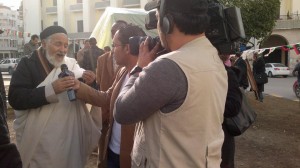
Washington, D.C. – Programming across the Broadcasting Board of Governors’ global media networks reached an estimated 206 million people per week in 2013, including large audiences in countries that are strategically critical for U.S. foreign policy.
The 206 million weekly reach reflects the combined TV, radio, Internet, and mobile audiences of Voice of America, Radio Free Europe/Radio Liberty, Radio and TV Martí, Radio Free Asia and the Middle East Broadcasting Networks (Alhurra TV and Radio Sawa) and is a net increase of nearly 31 million from last year’s total, as detailed in the BBG’s 2013 Performance Accountability Report. For the first time, TV audiences have surpassed radio, with the TV audience measuring 110 million and radio reaching 109 million people per week. The Internet audience has grown substantially from last year, with 22 million reached online. Some of the increase represents data from countries that were not surveyed previously.
“Our journalists produce high quality programming, and we’re finding fresh ways to innovate in content delivery. This makes it possible for the networks supported by the BBG to reach these record-breaking audiences,” said BBG Chairman Jeff Shell. “Through these means, we help to nurture and sustain free, open, democratic societies by supporting free press and free expression, and by conveying the American democratic experience to countries where the media are not free. This research data is critical in helping us navigate challenging media environments, and connecting with audiences on the platforms that they prefer.”
The BBG strongly believes in meeting audiences on their media of choice. As such, the BBG employs diverse distribution models across its broadcast regions, ranging from syndication by placing an Alhurra TV program on a popular channel in Egypt, to Radio Free Asia and VOA’s shortwave programs in tightly-controlled countries such as North Korea.
The BBG’s largest audiences are in Indonesia (21.6 million), Nigeria (20.7 million), Mexico (14.9 million), and Iran (14.5 million), all countries in which the BBG has made strides in innovative programming.
- In Indonesia, drawing on an affiliate-based strategy, VOA content is carried on six of the top national TV networks as well as on FM radio stations across the country. VOA also seeks digital distribution opportunities, particularly on mobile devices, ownership of which is growing rapidly in Indonesia.
- In northern Nigeria, where the terrorist group Boko Haram has a foothold, VOA added weekend programming and a new SMS mobile service in the past year to provide breaking news updates. In 2013, the BBG expanded its overall broadcast reach in Africa by installing FM transmitters in Bamako, Mali, Juba, South Sudan, and N’Djamena, Chad.
- In Mexico, VOA has partnered with high-profile affiliates to successfully place its Spanish Service’s “U.S. Bureau” programming on networks where audiences most want to see it.
- In Iran, the BBG has achieved success with a multi-platform, multi-network model. Programs are available on direct-to-home satellite television, as well as online and on mobile phones, 24 hours a day. VOA Persian and RFE/RL’s Radio Farda recently launched a program collaboration in the form of Radio Farda’s first TV program on VOA’s and RFE/RL’s satellite channels.
Audiences grew substantially in Pakistan, where more than 7.5 million people watch or hear BBG programming. In an effort to reach younger audiences there, VOA’s Urdu Service placed fast-paced TV programs on competitive cable networks providing insight into American values and daily life.
Afghanistan and Iraq continue to be in the top ten BBG audiences globally, though decreases in reach suggest evolving media sectors as more local media organizations commence operations.
The data for the 2013 audience estimate come from surveys of adult (age 15+) populations in more than 90 countries conducted around the world over the past 5 years. More than 80% of these surveys were conducted with the previous two years.
For further facts and figures as well as information on research methods, please refer to the following information.
- BBG 2013 Audience Overview (PDF)
- BBG Research Methodology (PDF)
To read this release on BBG.gov, click here.
Broadcasting Board of Governors (BBG) is the independent federal agency that oversees all government-supported U.S. civilian international media. The mission of the BBG is to inform, engage and connect people around the world in support of freedom and democracy. Networks within the BBGinclude the Voice of America, Radio Free Europe/Radio Liberty, the Middle East Broadcasting Networks (Alhurra TV and Radio Sawa), Radio Free Asia, and the Office of Cuba Broadcasting (Radio and TV Marti). BBG programming reaches an audience of 206 million in more than 100 countries and in 61 languages.